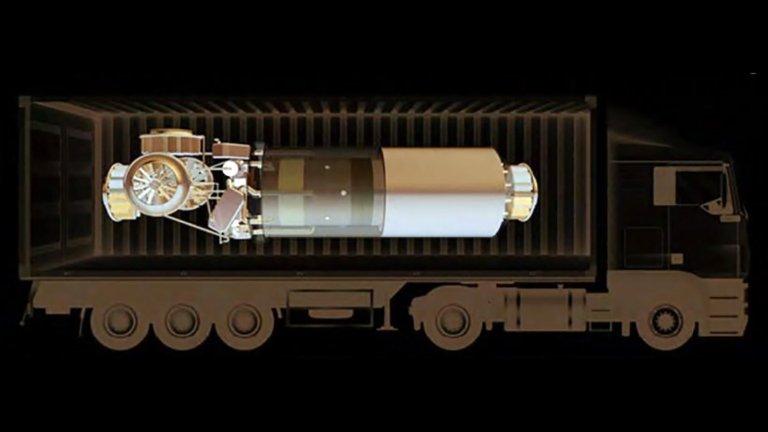The U.S. Department of Defense’s Strategic Capabilities Office (SCO) released a Record of Decision (ROD) for Project Pele, a program intended to design, build, and demonstrate a mobile microreactor. This reactor will be assembled and initially operated at Idaho National Laboratory (INL), and will be the first electricity-generating Generation IV nuclear reactor built in the United States. The first electricity-generating Generation IV nuclear reactor demonstrated in the world was the HTR-PM, a Chinese reactor, which first reached criticality in September 2021. SCO will construct an inherently safe by design nuclear microreactor capable of being transported by the DoD and able to deliver 1-5 MegaWatts of electrical power for a minimum of three years of full power operation.
“Thanks to the tireless work of the contract teams,the valuable input from local stakeholders, and the talented and experienced NEPA technical support teams at the Department of Energy and U.S. Army Corps of Engineers, we are confident that an inherently safe by design mobile microreactor can be constructed and demonstrated safely at Idaho National Laboratory. Advanced nuclear power has the potential to be a strategic game-changer for the United States, both for the DoD and for the commercial sector. For it to be adopted, it must first be successfully demonstrated under real world operating conditions,” said Dr. Jeff Waksman, Project Pele program manager.

In March 2020, Project Pele announced a Notice of Intent (NOI) to conduct an environmental analysis in accordance with the National Environmental Policy Act (NEPA). At the same time, SCO kicked off a two-year microreactor design competition. The NEPA was conducted such that it would envelope in scope all possible reactor designs allowed under Pele’s technical requirements. SCO is considering engineering designs developed by two competing teams: BWXT Advanced Technologies, LLC, Lynchburg, Virginia; and X-energy, LLC, Greenbelt, Maryland. SCO has full confidence that both teams have developed reactor designs which can be constructed to meet SCO’s minimum technical requirements. However, only one design will be selected and announced later this spring.
The DoD uses approximately 30 terawatt-hours of electricity per year and more than 10 million gallons of fuel per day — levels that are only expected to increase due to anticipated electrification of the non-tactical vehicle fleet and maturation of future energy-intensive capabilities. A safe, small, transportable nuclear reactor would address this growing demand with a resilient, carbon-free energy source that would not add to the DoD’s fuel needs, while supporting mission-critical operations in remote and austere environments.

As a High-Temperature Gas Reactor using High-Assay Low Enriched Uranium (HALEU) Tristructural Isotropic (TRISO) fuel, Project Pele is a fourth-generation nuclear reactor, which can serve as a pathfinder for commercial adoption of such technologies, thereby reducing the nation’s carbon emissions and providing new tools for disaster relief and critical infrastructure support.
Project Pele is a whole-of-government effort, with critical expertise provided by the Department of Energy, the Nuclear Regulatory Commission, U.S. Army Corps of Engineers, the National Aeronautics and Space Administration, and the National Nuclear Security Administration. The Pele reactor is to be a single prototype, which will be demonstrated only within the United States, under the safety oversight of the Department of Energy. A decision by the DoD on whether or not to transition the technology and to use it operationally will be made at a future date.
















